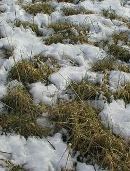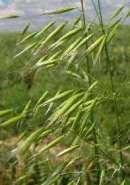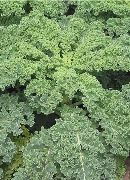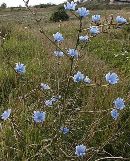Wildlife
Wildlife Food Plots are not difficult to establish and can be done with minimal investment. A basic understanding of the soil, the wildlife species you wish to attract, and wildlife food preferences will help make your food plots successful. When done properly, food plots can provide opportunities to view wildlife or develop a healthier wildlife population. Establishing food plots can also be a great activity for a family or members of a conservation organization.
Triticale | Peas | Oats
Kale | Chicory | Custom Blends
 Triticale
Triticale
Makes excellent forage and seed production for wildlife. Triticale is a very high quality, robust small grain. It has good disease and insect resistance, and grows well even when late planted in December and January. Seed availability may be limited.
Back to Top
 Peas
Peas
Popular for wildlife enthusiasts planting warm season plots for deer. It is extremely high yielding, high in protein and productive throughout the summer. It is very tolerant to deer pressure once established and has good regrowth potential. It will also produce seed in pods in late summer that make excellent quail and turkey food.
Back to Top
 Oats
Oats
Many of the forages used for cattle are also used by wildlife. Animals such as deer are natural browsers and have adapted to eating a larger variety of wild-type plants than have cattle. However, research is showing that high-quality forages are high in protein and other nutrients and can be especially important in deer and wild turkey diets.
Back to Top
 Kale
Kale
A form of cabbage, green in color, in which the central leaves do not form a head, Kale is considered to be a highly nutritious vegetable with powerful antioxidant properties and is anti-inflammatory. Kale is very high in beta carotene, vitamin K, vitamin C, lutein, zeaxanthin, and reasonably rich in.
Back to Top
 Chicory
Chicory
Root chicory contains volatile oils similar to those found in plants in the related genus Tanacetum which includes Tansy, and is likewise effective at eliminating intestinal worms. All parts of the plant contain these volatile oils, with the majority of the toxic components concentrated in the plant’s root. Chicory is well known for its toxicity to internal parasites. Studies indicate that ingestion of chicory by farm animals results in reduction of worm burdens, which has prompted its widespread use as a forage supplement.
Back to Top
Custom Blends also available

